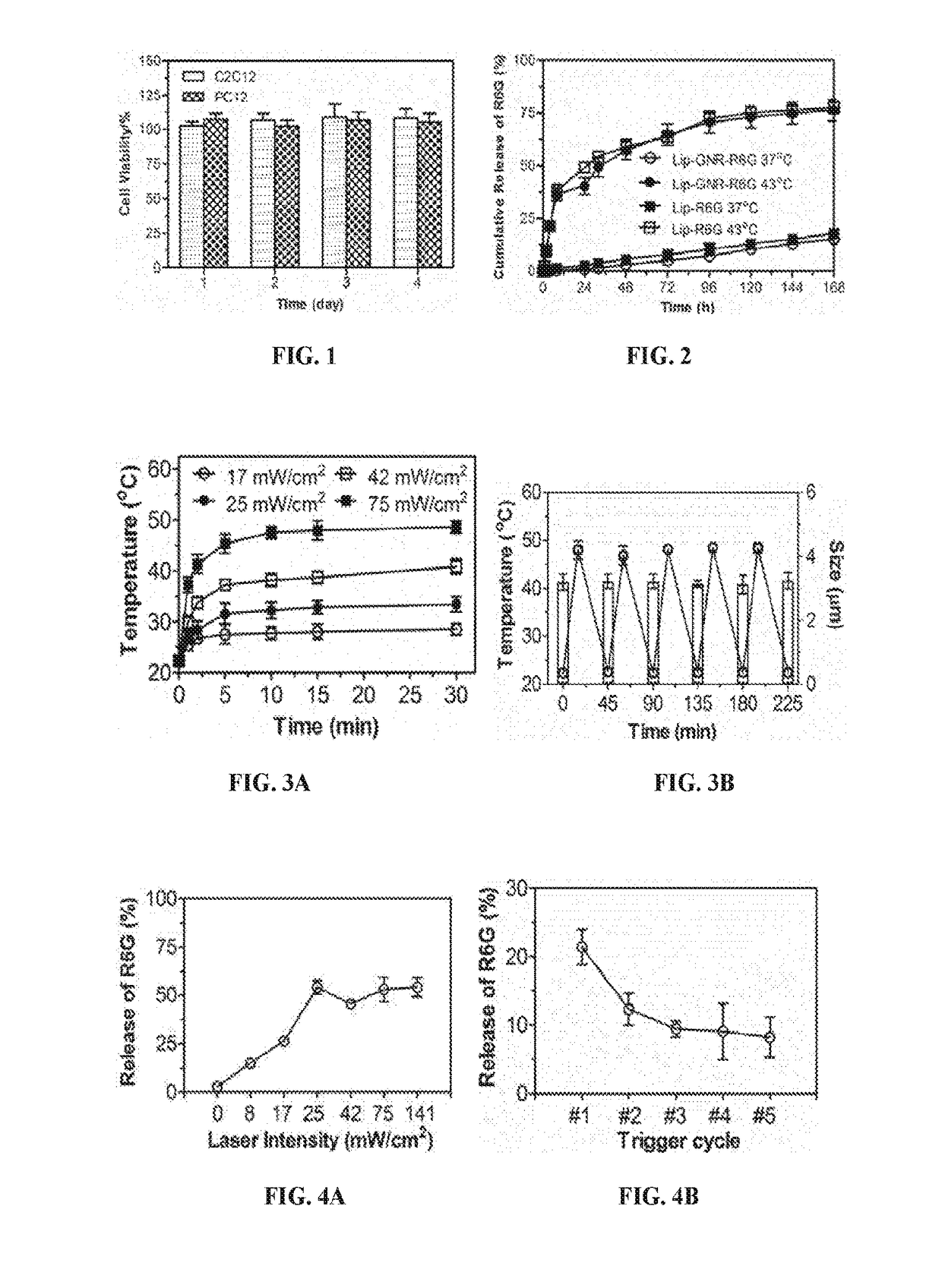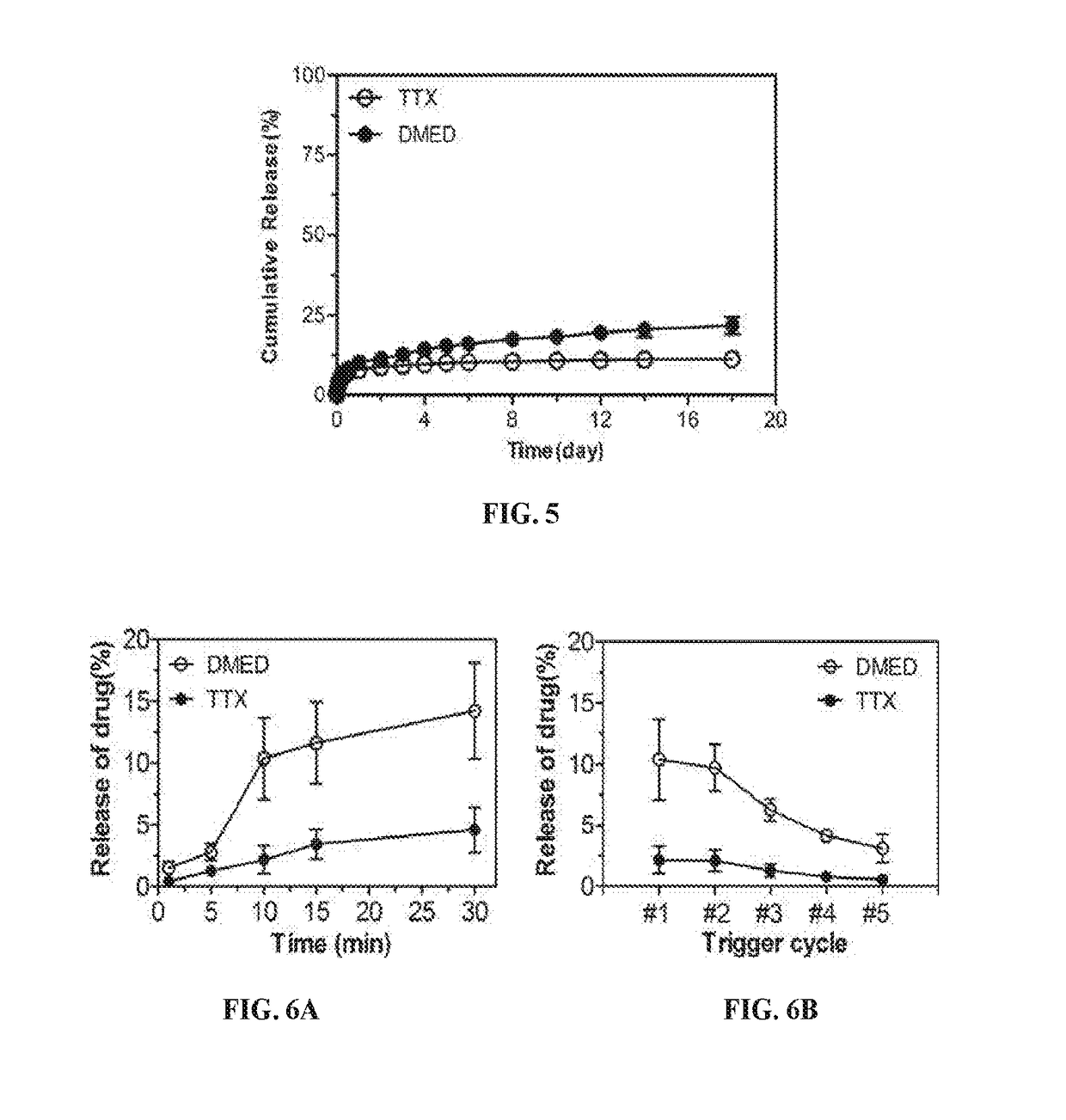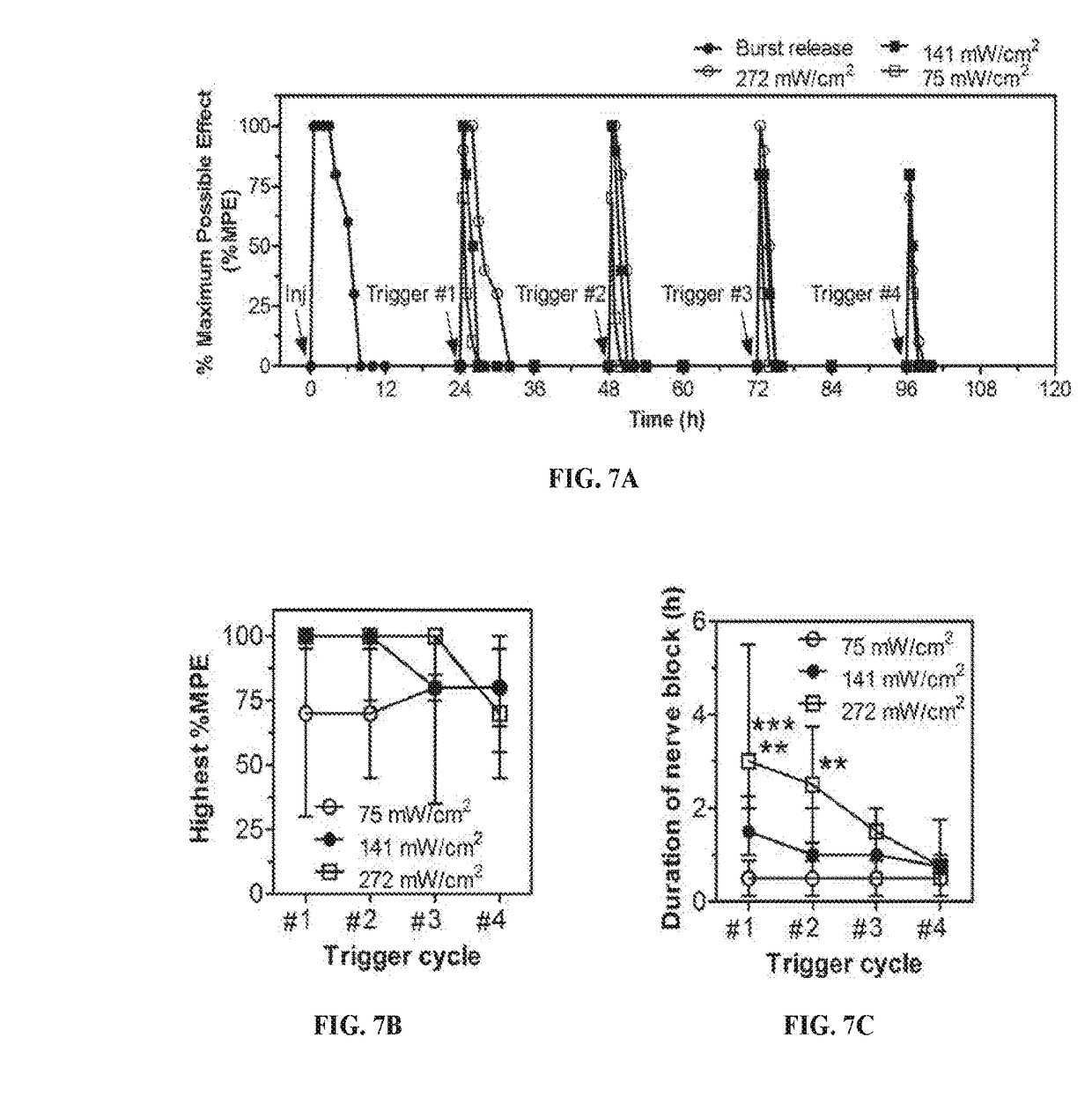Compositions and Methods for On-Demand High-Efficiency Triggerable Anesthesia
a triggerable anesthesia, high-efficiency technology, applied in the direction of drug compositions, disrupted materials, organic active ingredients, etc., can solve the problems of prolonging hospitalization, potentially serious complications, and reducing the quality of life of patients suffering postoperative or even chronic pain, so as to reduce the irradiance needed to induce nerve blockage, prolong the duration of pain relief, and increase the number of triggerable nerve block events
- Summary
- Abstract
- Description
- Claims
- Application Information
AI Technical Summary
Benefits of technology
Problems solved by technology
Method used
Image
Examples
example 1
Conjugated with Gold Nanorods (Lip-GNRs) are Stable at Physiological Temperature with Minimal Cytotoxicity In Vitro
[0267]Methods
[0268]Materials.
[0269]Tetrodotoxin (TTX) was obtained from Abcam plc (Cambridge, Mass.); Dexmedetomidine hydrochloride (DMED) was acquired from R&D systems, Inc. (Minneapolis, Minn.). DPPC and DPPG were acquired from CordenPharma International (Plankstadt, Germany). Cholesterol and rhodamine 6G were purchased from Sigma (St. Louis, Mo.). Thiolated poly(ethyl glycol) 1,2-Distearoyl-sn-Glycero-3-Phosphoethanolamine (HS-PEG-DSPE, Mw 2000 Da) was from NanoCS Inc. (New York, N.Y.). Tetrodotoxin ELISA kits were purchased from Reagen LLC (Moorestown, N.J.). Gold nanorods were synthesized as reported by Nikoobakht, et al., M.A. Chem. Mater., 15:1957-1962 (2003). PEGylation of GNRs was conducted by incubating with methoxy-PEG-thiol (Mw 2000 Da, Laysan Bio, Arab, Ala.) for 24 hours at room temperature and dialysis against deionized water for three days (Niidome, et a...
example 2
Conjugated with Gold Nanorods (Lip-GNRs) are Photosensitive In Vitro
[0281]Methods
[0282]Photosensitivity of Lip-GNRs.
[0283]To assess the photosensitivity, Lip-GNR-0 (0.1 mL) were placed in a 96-well plate and irradiated with an 808 nm CW NIR laser for 1-30 minutes, with irradiances ranging from 8 to 75 mW / cm2. The temperature was detected using an FLIR E50 infrared imaging camera (FLIR Systems, Wilsonville, Oreg.) at the beginning and end of each cycle of irradiation. To detect the stability of Lip-GNR-0 after multiple triggers, Lip-GNR-0 were repeatedly irradiated with the NIR laser at 75 mW / cm2 for 15 minutes, followed by cooling at RT for 30 minutes. The size was characterized with particle analyzer at the end of each off-state.
[0284]Phototriggerable Release In Vitro.
[0285]The phototriggerable release of R6G was evaluated by measuring the fluorescence intensity. Lip-GNR-R6G (0.1 mL) was placed in a 96-well plate and irradiated with an 808 nm CW NIR laser for 10 minutes. The sample...
example 3
e and Adjustable Photosensitive Release of Tetradoxoin and Dexmedetomidine from Lip-GNRs In Vitro
[0290]Methods
[0291]Lip-GNR-TD were dialyzed against PBS at 37° C. for 24 hours to remove the burst release of TTX and DMED. Phototriggerable release of TTX and DMED from Lip-GNR-TD was assessed by ELISA and HPLC, respectively. To test the effect of duration of irradiation on drug release, drug release was measured independently (separate sample) for each duration of irradiation. To evaluate multiple triggerable release, Lip-GNR-TD were irradiated with NIR laser for 10 minutes for five cycles separated by 30 minutes. Free drugs after each trigger were removed by centrifugation (4000×g, 10 minutes) and the Lip-GNR-TD were re-suspended in fresh PBS. cycles separated by 30 minutes. Free drugs after each trigger were removed by centrifugation (4000×g, 10 minutes) and the Lip-GNR-TD were re-suspended in fresh PBS.
[0292]Results
[0293]In the absence of irradiation of Lip-GNR-TD, both TTX and DMED...
PUM
| Property | Measurement | Unit |
|---|---|---|
| Nanoscale particle size | aaaaa | aaaaa |
| Nanoscale particle size | aaaaa | aaaaa |
| Frequency | aaaaa | aaaaa |
Abstract
Description
Claims
Application Information
 Login to View More
Login to View More - R&D
- Intellectual Property
- Life Sciences
- Materials
- Tech Scout
- Unparalleled Data Quality
- Higher Quality Content
- 60% Fewer Hallucinations
Browse by: Latest US Patents, China's latest patents, Technical Efficacy Thesaurus, Application Domain, Technology Topic, Popular Technical Reports.
© 2025 PatSnap. All rights reserved.Legal|Privacy policy|Modern Slavery Act Transparency Statement|Sitemap|About US| Contact US: help@patsnap.com



